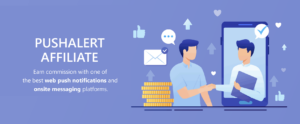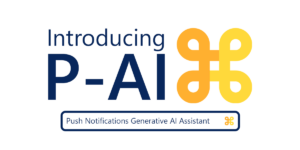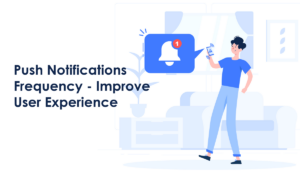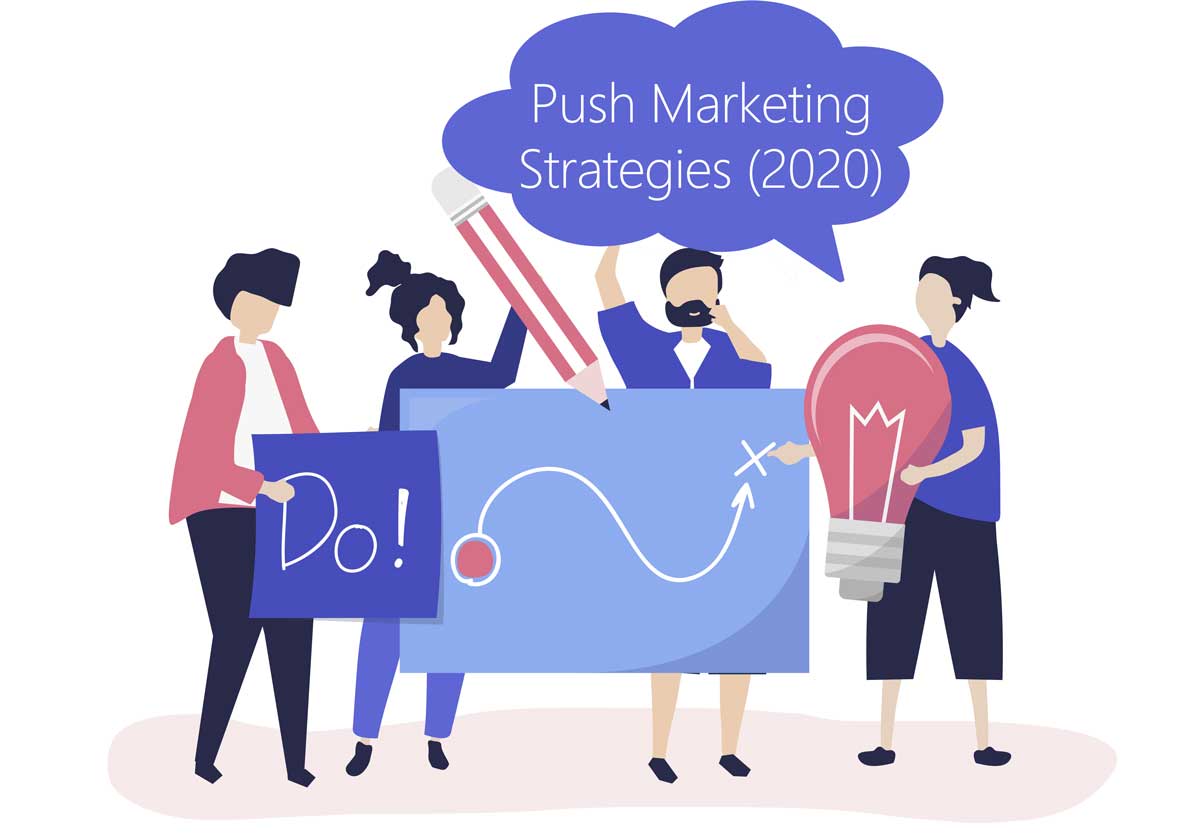
Effective Push Marketing Strategies for 2020
Bouncing back after COVID-19 is now the biggest task for marketers. As the world is now opening up to a post-COVID reality, the needs of your customers are changing as well. Now, every action that you take in marketing your business should cater towards solving problems of your current and new clients.
Positive engagement with customers and building a relationship is this crisis is going to be the key moving forward. Its now time for an outreach to customers, talk to them on social media, get on podcasts, webinars and use far more effective channels like web push notifications to get your word out.
Here’s our list of smart web push notification strategies for 2020 to get more subscribers and boost sales in a post-COVID world.
1. Deep dive into your Users’ On-site activity and Behavior
It is crucial to tap into user behavior early on for both personalization and making them convert. Popups and prompts can be distracting and a behavioral analysis like bounce-rate would give you great insight into when to present the permission prompt to get more subscribers.
A smooth experience is critical and it is best to trigger a web push permission with a user action so that it leads to a conversion. Here are a few takeaways from our analysis:
- Viewing a Product: If you are running an e-commerce site, you can trigger the notification request after the customer has viewed a single or multiple products on your website. You can use delay or a specific product based trigger to launch the opt-in. Since the user is already interested in your products, you can present them with an offer on their first purchase by subscribing to push notifications on your website. This in turn gets you both a push subscriber and also a conversion.
- Reading an Article: A blog or a news website can easily convert readers into subscribers, by presenting the push permission after they have finished reading the article or post. It adds value to your subscription opt-in and the visitor is more likely to allow the prompt to receive future updates.
- Time spent or Session Count: You can also use number of sessions or total time spent on your website as a parameter to show the web push permission prompt. Given that they have spent valuable time on your site, they are more likely to convert.
Tip: It is best not to trigger the push permission as soon as a user lands on your website, start with a longer 10-15 second delay. See your bounce rate and if it is under control, start lowering the time by 1 second at a time. Similarly, you should also experiment sending notifications at different times so see how your audience is reacting to them.
2. Where to ask the user to opt-in to Notifications
You would need to analyze how visitors move through your website, your most popular pages and those that have the least bounce rate. You can use different web push prompt styles on these pages, from a slider prompt to a simple button to entice your visitors to subscribe.
Here are some web push campaign ideas you can use:
- Order Completion Page – If you run an e-commerce site, you can ask the user to subscribe after they have completed their purchase to get updates regarding their order. You can further entice users to subscribe by telling them the benefits of push subscription, like product recommendations, special offers or when there is a sale. This unobtrusive way of asking users to subscribe can significantly boost your subscription rate.
- Order Tracking Emails – You can also use other channels to boost subscription. An easy way is to include a link to your site’s web push subscription page in your order tracking emails. The proposition is simple, users can subscribe to notifications to keep a track of their shipment.
- Out of stock product pages – Ask your visitors to subscribe to notifications on when a product they like will be back in stock. Back in stock push alerts are quite common across the industry.
- After searching for a flight or hotel – If a customer has browsed for a specific flight or hotel, you can ask them to subscribe to keep them updated on the status. You can also further entice that they can get details on upcoming offers and exclusive discounts by signing up for your push notifications. The customer has already shown intent by searching for the flight or hotel on your site, therefore it is far easier to convert. If the customer has already booked the flight, you can ask them to subscribe to get details about flight departure, gates through push notifications. Similarly, you can send details about hotel check-in/checkout-times through push notification updates.
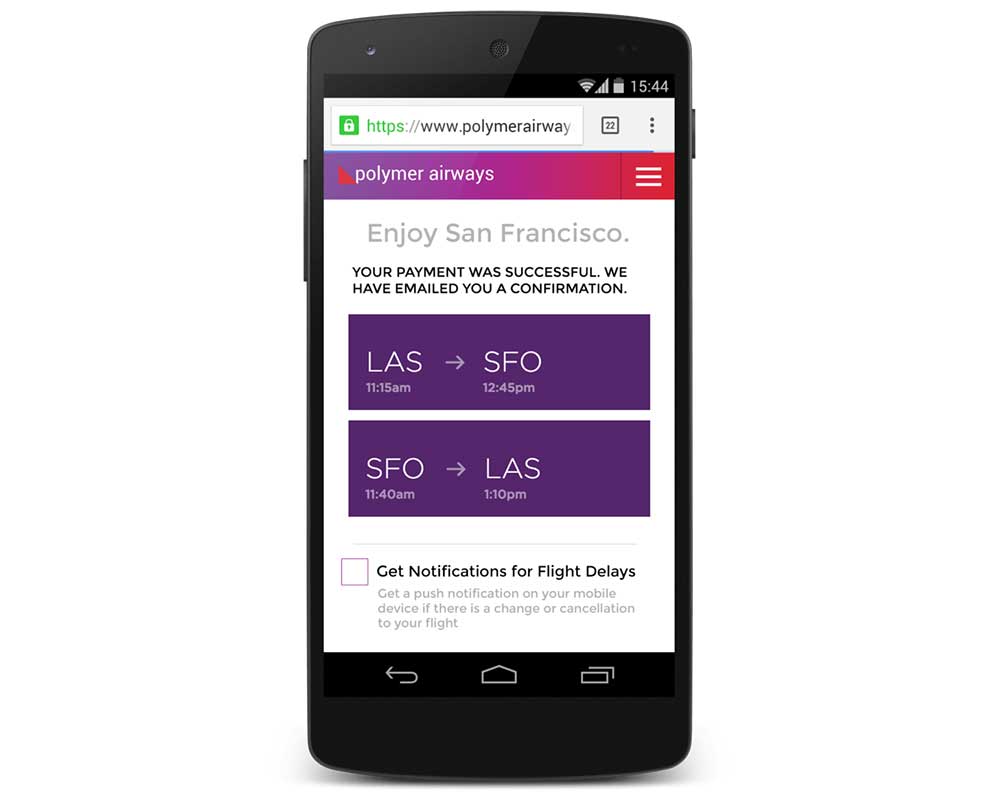
Web Push Notification Permission UX Example
3. Work on your permission prompt copy
The opt-in text is the most important part of the user’s subscription journey. It tells them why they should subscribe to your push notifications . You must clearly convey the value your push alerts add. Keep the following in mind while creating your permission prompt copies:
- What value do your notifications provide – First and foremost, your opt-in message must tell the users the benefits of allowing notifications on your website. For example, online retailers, travel sites, hotel aggregators, content publishers can tell the users to subscribe to notifications to get upcoming offers, exclusive sales or discounts. You can also provide a coupon for new users who sign up to push alerts.
- Whom are you targeting – Your messaging should be based on your target audience. Whether it is online shoppers, marketers, influencers or professionals. Once you define your target segment, you can create your permission opt-in accordingly.
- Tell them about opting out – The best way to build trust is to explain the process of opting out if they do not want to receive notifications. A simple message that the notifications can be turned off anytime from the browser, goes a long way. You should also mention the frequency of notifications you are planning to send, say once a week, this will foster trust and make your users more likely to sign up.
- Grab attention with a catchy one-liner – Get creative with your permission prompt. Make it funny or to the point, to get your visitors to subscribe to notifications.
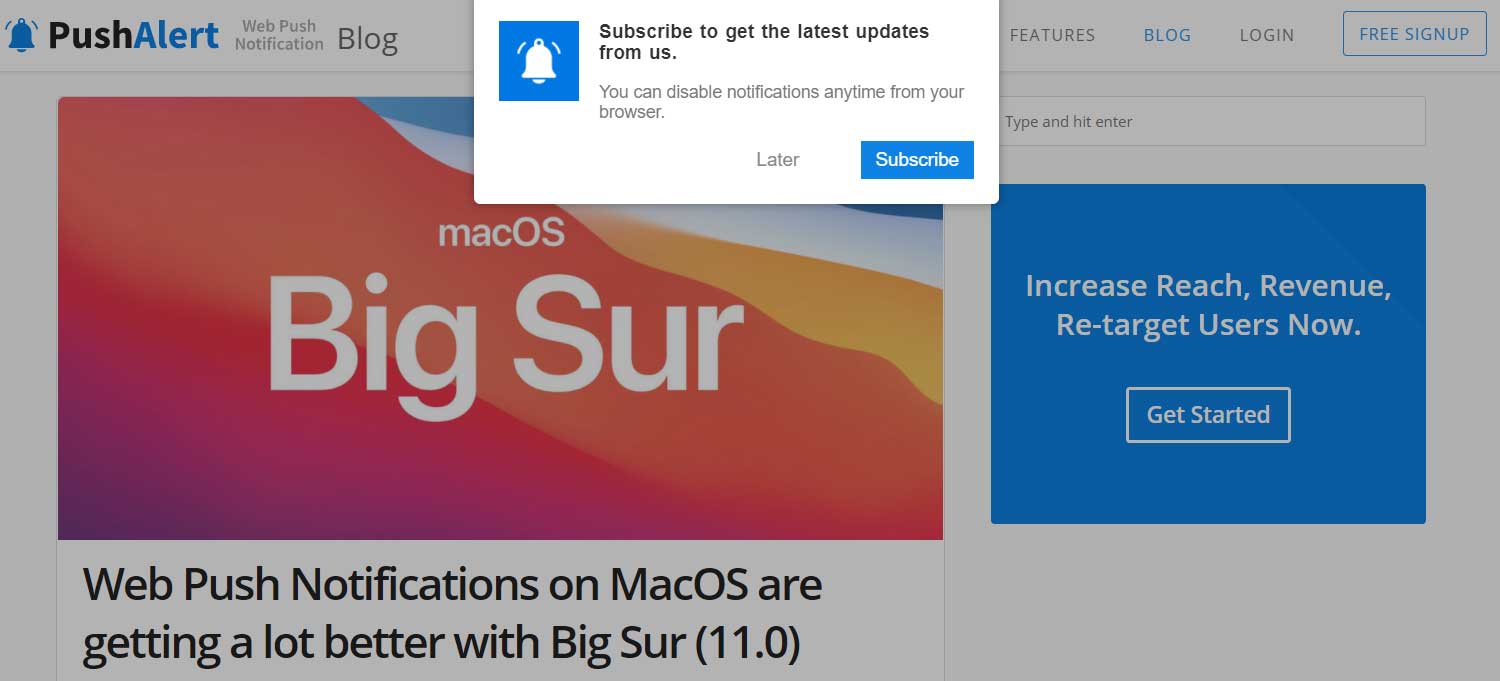
Tell Users How to Opt Out of Notifications
4. Use other channels to encourage subscription
Web push notifications are now becoming the go-to channel for digital marketing. With the right content and timing, you can see immense success with push notifications.
Given this is still a fairly new channel, you can use your other channels to promote subscription. The benefits to customers will be quick updates and exclusive discounts. Moreover, you can also stress that customers won’t have to look in their inbox or your social media pages to find offers. They would get them delivered, right on their devices.
You can start with adding links or buttons to your existing communications channels, be it emails, newsletters or any other form of correspondence you have with customers. Next, you can use social media to further boost your subscription rate with special offers and contests for web push subscribers.
5. Use proper call-to-action to trigger permissions opt-ins
You already have a huge resource at your disposal – your current site analytics. Check which are your most valuable channels in terms of click through and conversions. Be it newsletters, emails, PDF reports or any other form of communication, a strategically implemented subscription prompt will help you get a huge boost in subscriptions.
For e.g.:
For case studies or reports, once a user clicks on the download link, you can open a thank you page which asks for permission to keep them updates with similar updates. You can do the same for infographic downloads.
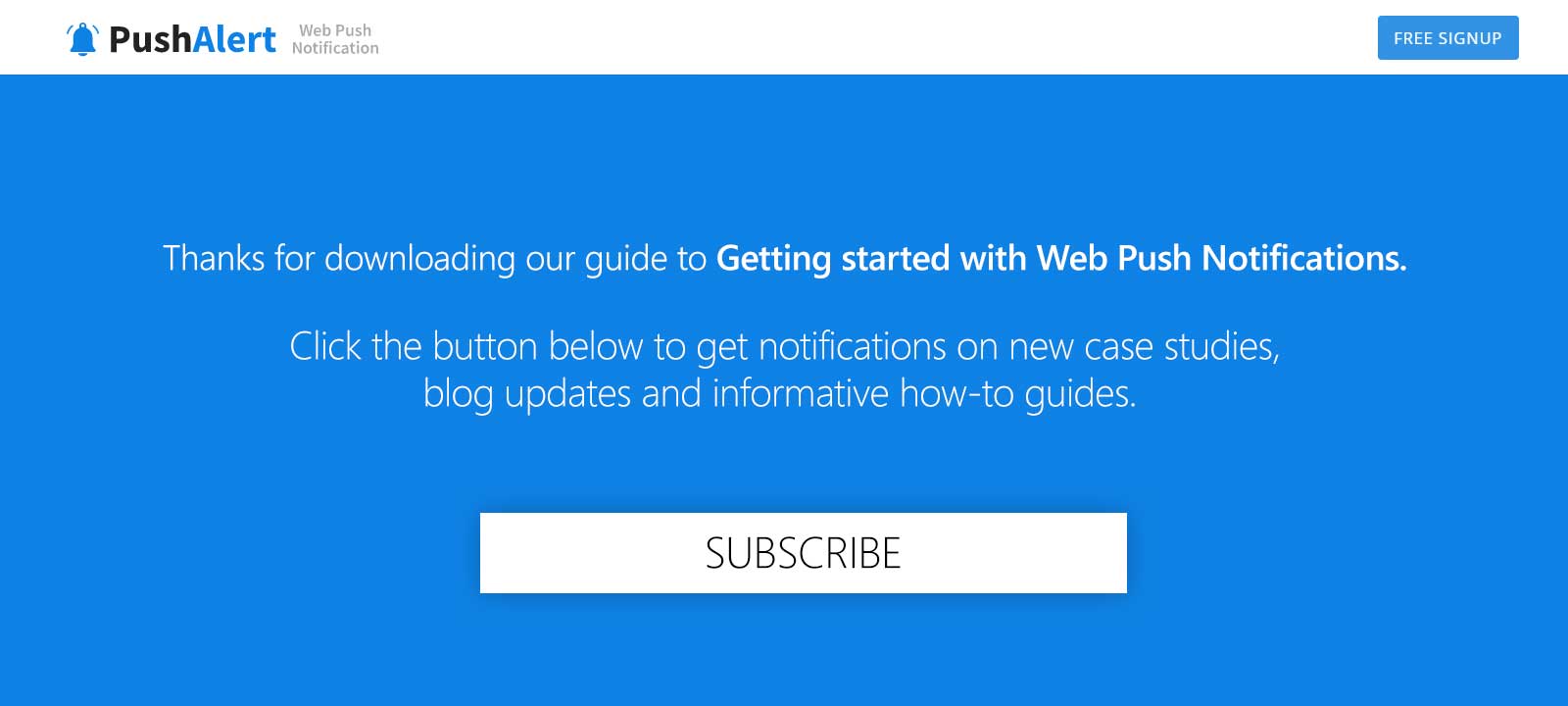
Trigger Push Notification Opt-in With Custom Buttons
6. A proper Exit intent can do wonders for your subscription rate
Exit intent has been around for a long time. It recognizes when a user is about to leave the site and shows a popup with an exciting offer helping you convert more.
You can use the same to boost your web push subscriptions. For e.g., If you run an e-commerce site, you can show an exit intent popup with discount on the product category the customer was looking at if they subscribe to notifications. This encourages your visitors to sign up and also helps you get more conversions.
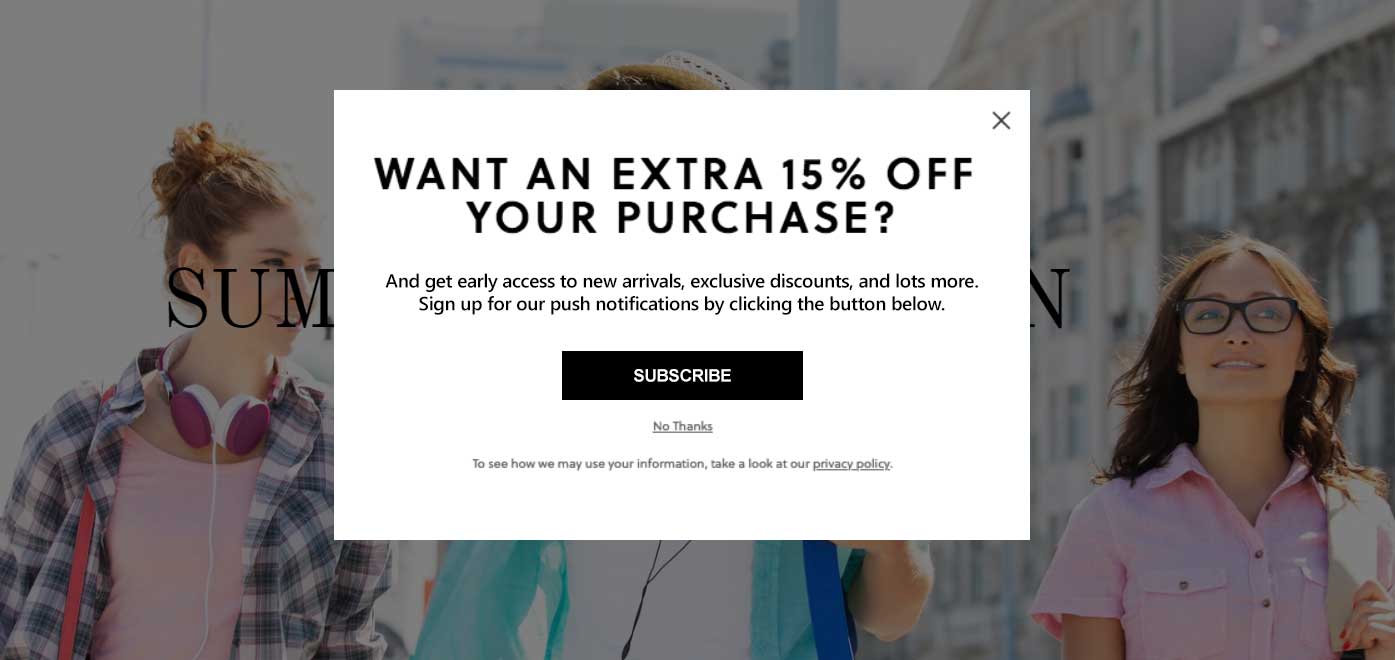
Ecommerce Exit Intent Web Push Notification Permission
7. Make web push subscription a part of your onboarding process
Push notifications work better when they are seamlessly tied into the user’s journey. Consider the user’s entire movement through your website. You can use services like Hotjar to see website heatmaps and record sessions. This will help you know where you have the highest bounce rate in your funnel.
Try to get users to subscribe to notifications before they bounce off from your funnel so that you can then bring them back using push notifications. You can integrate the push subscription within your form, by asking users the permission to send notifications regarding their subscription. This seamless integration boosts will reduce your bounce rate and give you a chance to re-engage with users.
8. Identify your high traffic pages and use them to get more subscribers
Using analytics to your advantage, identify your high traffic pages and add strategically placed subscription buttons to boost your subscription rate. for content sites, you can use a header or footer opt-in while you can use more prominent buttons for e-Commerce websites on product or category pages.
If you are using display ads to bring users to your landing pages, this is the perfect place to ask for permission to show notifications by offering discounts, product updates or downloads.
9. Segmentation should be your top priority
Segmentation should be the first step before you begin broadcasting notifications. You should start with audience segments targeting specific users by applying criteria such as location (city, region, or country), the OS they are using, the pages (products) that they have visited on your site, number of visits and other such parameters.
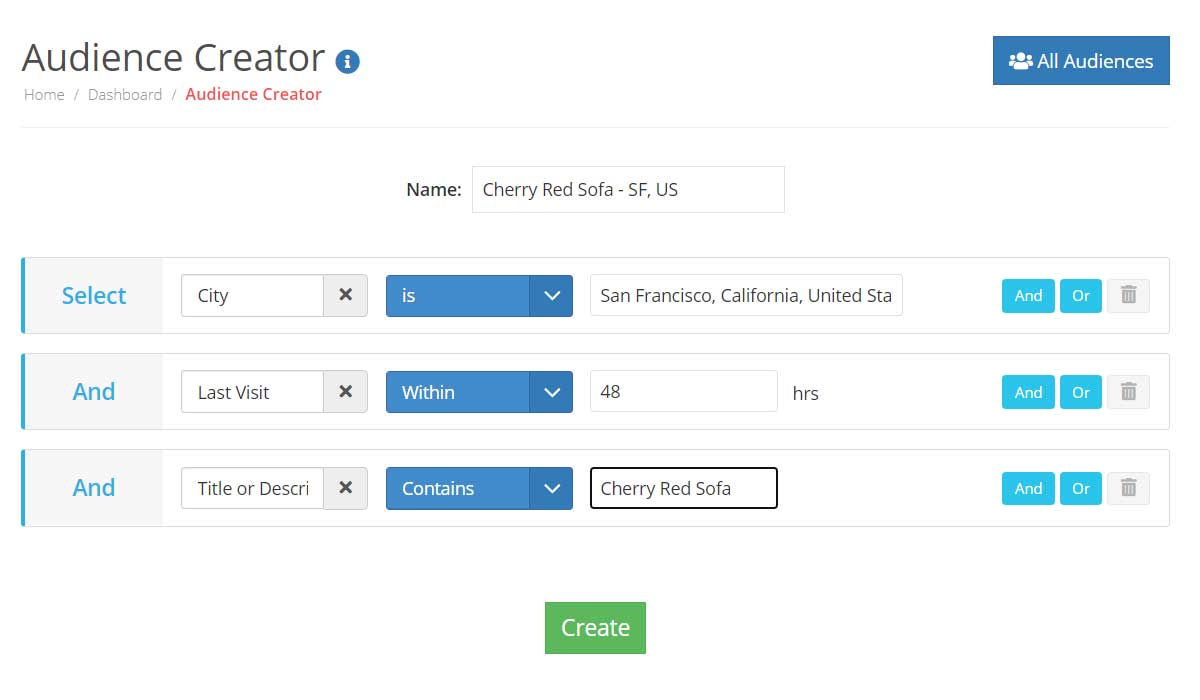
Audience Segment – Subscribers who searched for Cherry Red Sofa in San Francisco over last 2 days.
In our analysis of over 10 Billion notifications sent last week, we have seen that notifications sent to specific segment have over 55% better click through rate compared to broadcasted push notifications.
Experiment with your targeting until you have an optimized sending schedule and segmentation. Employ A/B testing to get even better results (detailed later in the post.)
10. Sending the right message at the right time
Your users live in different parts of the world, with different time zones, different habits. Therefore, not all people would be online at the same time. So, you need to understand the best time to engage with your customers.
PushAlert provides two different types of delivery mechanisms. You can schedule notifications to go out at specific time, combining this with specific location based segments, you can target different time zones.
Alternatively, you can use timezone based scheduling as well, which sends notifications based on the user’s local timezone.Consider you want to run a sale at Midnight, you can send a reminder notification at 5 PM to all subscribers in their own timezone, so that all are ready when the countdown ends. Otherwise, users may get notifications when they are sleeping and never actually engage with them.
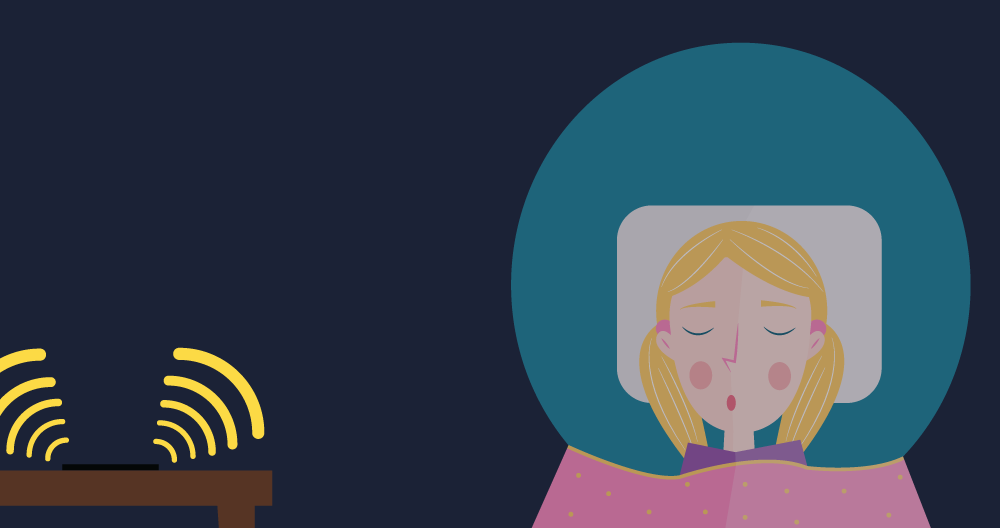
Use timezone based scheduling to send notifications when users are actually active
There can be a use-case for sending immediate notifications, like in the case of an urgent news briefing, a flight cancellation, which affects your users and they need to be notified as soon as possible. But in most cases, scheduled delivery would yield the best results.
11. Use rich notifications to boost click rate
Rich notifications allow you to add images, emojis, action buttons and icons to notifications. Many subscribers think that notifications are just for information and therefore do not click on them. Adding a button with an action keyword like “Click Here!”, “Join Now” can help boost click through rate. On an average we have seen a 20% uptick in conversions on using action buttons in web push notifications.
Given that text size is limited in a notification, you can make it more pronounced with a hero image. A visual representation is far more engaging than just text. Use emotional marketing to target specific behavior to show users what they are missing or instill a sense of urgency with a countdown. Push notifications with images have an average of 10% better click through rate than those without.
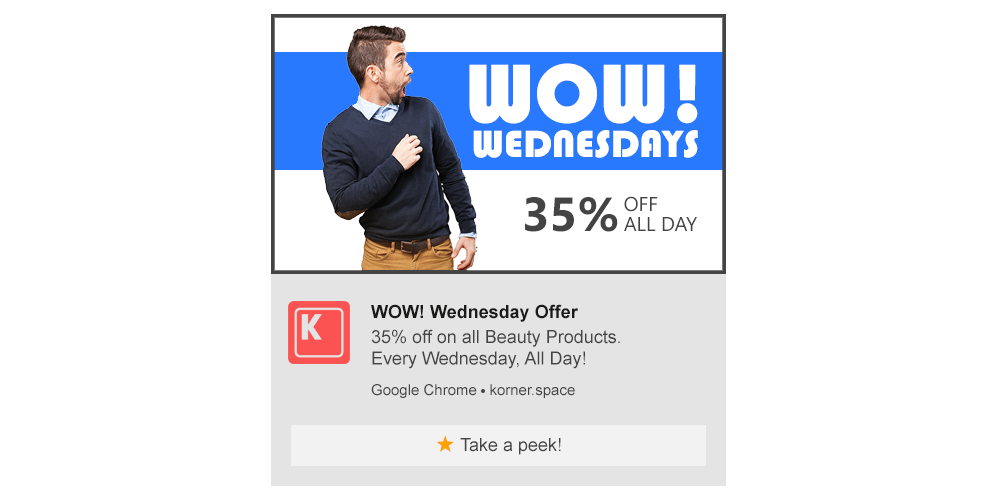
Rich Notifications With Hero Image, Custom Icon and Action Button
Emojis too can be a great help in increasing engagement. Avoid replacing words with emojis and stick to those that can be understood easily. You should typically add the emojis either at the beginning or end of a sentence.
12. Use A/B testing to understand your audience
You have done all the above steps and combed through your analytics as well as user data. Now, you are ready to start sending out your campaigns.
But wait, there’s one more thing to consider, how your users are going to react to your notifications. This is still an unknown quantity.
A/B testing helps you in gauging your audience reaction to your notifications and see what works best for you. By testing and re-testing your notification content, you get to analyze the results and make appropriate changes to your strategy.
We recommend changing only one variable at a time in your A/B tests, so that you know what is influencing the results.

A/B Testing Web Push Notifications
For e.g. you can start with Notification A and Notification B, both with the same title and message, but with a different image. By testing the two images against each other, you can see which one resulted in more clicks. Similarly, you can change the action button texts in Notification A and Notification B to see which result in better engagement.
Final Thoughts
To maximize performance of your web push campaigns, you need to collect data, test, analyze and apply what you learnt to your push strategy. 2020 has shown us that an owned audience is of utmost value to get your business on track, therefore you should value these users and focus on their needs.
Building your strategy on proper segmentation based on user behavior and sending notifications at the right time (and frequency) will help you reduce churn all the while boosting your subscription rate.
